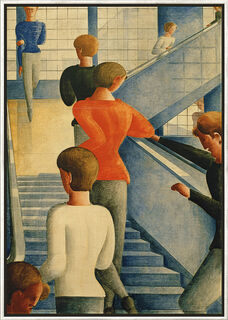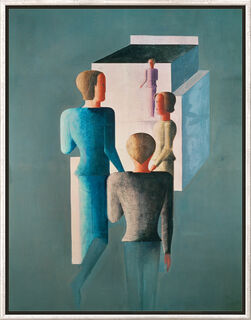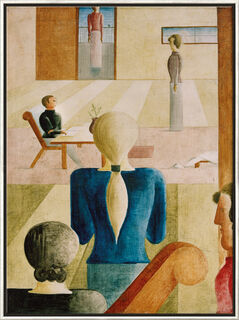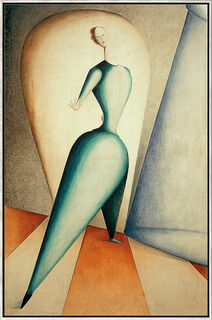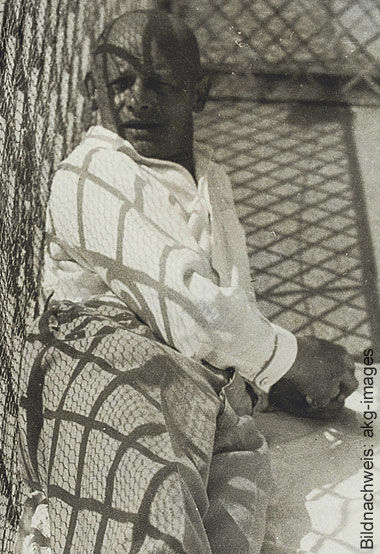
Oskar Schlemmer
1853-1934
His project was "the human being". He depicts the human being without expressive expression, as an "art figure", insisting that in our highly complex time, the human being is still the ideal aesthetic measure of all things.
"I want to create types of humans, not portraits… I want the essence of space, not interiors," that is how Oskar Schlemmer summarised the approach of his art. His subject is figures and their relationship to the space around them. It would be wrong to see anonymized, even alienated people in these carefully composed mannequins. It is no coincidence that they are reminiscent of archaic models that Schlemmer revered as the highest expression of the human form.
For a long time, Oskar Schlemmer’s works were not comprehensively exhibited, and even basic scholarly publications were difficult. The reason: Schlemmer's second-generation heirs repeatedly withdrew loans from museums and sometimes even prohibited reproductions. This made the great Bauhaus artist a "famous unknown". While individual works, such as the "Bauhaustreppe" (Bauhaus Stairway), attained iconic significance, another part of his oeuvre virtually disappeared from contemporary consciousness. This changed only recently.
In 2015, 70 years after his death, the Stuttgart State Gallery dedicated a globally respected exhibition to Oskar Schlemmer, whose catalogue was finally able to offer a comprehensive, richly illustrated presentation. He was also once again perceived beyond specialist circles as the great master of modernism, to be mentioned with his Bauhaus colleagues Kandinsky and Klee.

